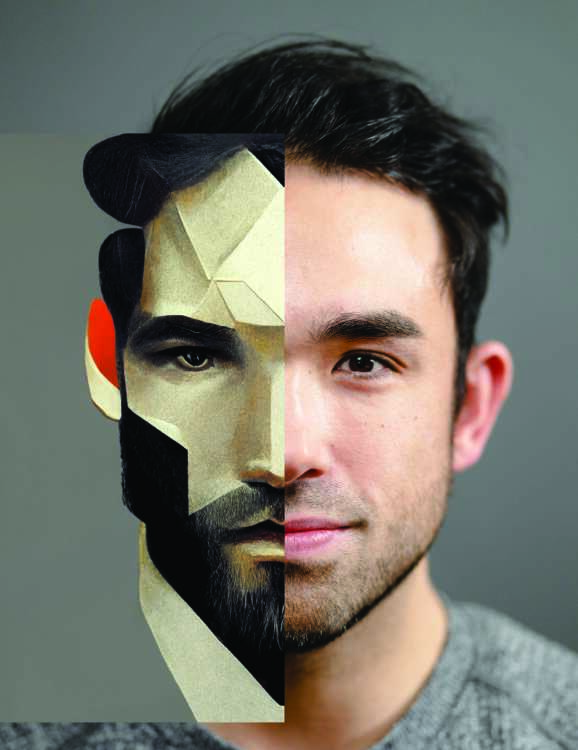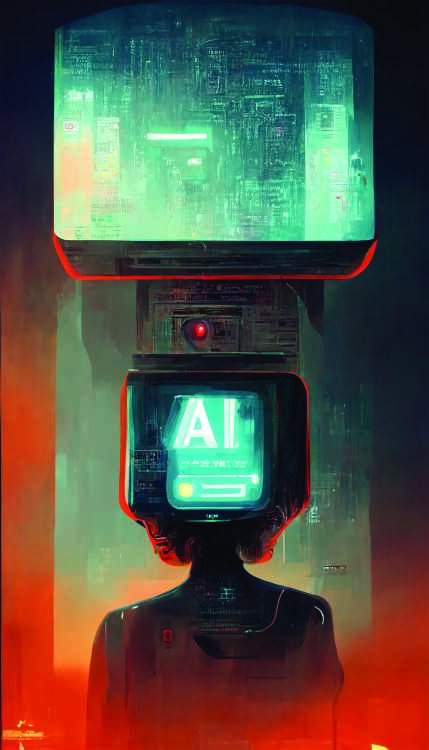Future visions of AI — A human perspective Q&A with software and brand expert Sho Rust

The following is a question-and-answer response with Sho Rust, recipient of a 1st50k in Cape Girardeau, who now leads a design and AI team, SHO.ai, with an office in Cape Girardeau and employees in New York, Austin and Paris.
Sho lives in Cape Girardeau, and is a professor at the Art Center College of Design in Pasadena, California, where he teaches “Future Visions” remotely to aspiring creative entrepreneurs.
Before his current ventures, Sho worked at The Boston Consulting Group, advising industry leaders in various global industries such as technology, media and automotive.
Q: What excites you about using artificial intelligence (AI) in the creation process?
Rust: Nothing compares to actually experiencing and using AI. Whether it involves music, images or writing, there are countless examples of how artists collaborate with AI to create. Film directors use AI to generate mood boards. Designers at Nike use AI to conceptualize new shoe designs. Engineers and designers at automotive companies develop car concepts. All use AI to create and design in literally superhuman ways.
Q: What inspires people in AI? What would you like to achieve with it?
Rust: AI is used everywhere on the Internet, social media and apps. People create using word prompts with almost no material costs or time spent. This means they can iterate unlike ever before, exploring countless concepts. Think of the great architects who sketch concepts and then have a talented pool of people render their designs. Or fashion designers who sketch, then have others realize their concepts. AI works in collaboration at the highest and most entry-level, accessing the bazillion of images and resources on the web, making quality content and design available to all.
Q: How does AI work?
Rust: AI is designed to mimic human intelligence. Experts constantly work to align AI with human intent and values so that its input is valued. Refined algorithms find patterns from large data sets to filter quality. Good data equals good AI. Bad data equals bad AI. Information-mining social media companies and search engines get this, which is why Google, META and others in this space are well-positioned for the future of AI.
Q: What uncharted areas of design is your company exploring with AI and brand building?
Rust: At our company, SHO.ai, we align AI with the building of a company brand. To do this, we partner with leading brand builders worldwide, help AI to recognize, understand and mimic their thoughts and behaviors. Then, we apply that thought through an algorithm and toolset so that companies can better share their brand story with clarity and beauty. Ultimately, we offer better customer experiences. Through AI, we level the playing field between companies with unlimited resources and everyone else.
Q: What excites you about AI in branding, interactive and digital design right now?
Rust: It’s impressive to think about what a person can do with a smartphone compared to five years ago. User-created content on YouTube is often more engaging and receives more views than a highly produced TV show. Sure, there is a lot of low-quality content on the web. But we see AI filter out the bad, then help users identify the good by learning from the mistakes of others. AI doesn’t just make data accessible; it makes expertise accessible. How we take photos is an example. Smartphones use AI to improve the quality of an image, making it harder to take a bad photo. This path to seamless quality will soon be applied to all industries. Early adopters are the winners.
Q: How do you see AI existing within a designer’s toolset in the future? What sorts of opportunities could these provide?
Rust: The digital age has made a designer’s job both exciting and overwhelming. I saw this firsthand while working on some of the biggest brands. Even with almost unlimited resources at work, it was tough, trying to prioritize and approach all the opportunities offered by technology and the internet. As designers, we are tasked with creating innovative and targeted content across a large user base, competing with global design teams. It was always my dream to sketch new concepts of innovative and nuanced ideas. To daydream around a better future. But I never have the time. Instead, I raced against the clock to execute repetitive tasks to compete with all the output required to establish a brand for a client. AI changed this — giving us, the designer, a creative freedom to dream and make choices. AI inspires collaboration, our creativity, and performs repetitive tasks. We, in turn, are the human touch needed. Pushing pixels is for AI. Removing the repetitive work and collaborating with AI to inspire allows us to be human.
Q: What is the most exciting work in AI that you’ve seen recently?
Rust: Regarding excitement, it’s hard not to mention the work that Tesla does with its autopilot systems in their cars and now robots. They are solving an important problem with AI vision systems. Is it perfect? No. But are humans? On certain tasks, humans cannot compete. SpaceX lands rockets vertically with AI. Lives are saved with AI in medicine. Access to the best minds and the world’s knowledge is powerful.
Q: What advice do you have for designers starting out today?
Rust: As a designer, it’s important to be open-minded. Investment in technology and learning to work with tools like AI have always been an inevitable part of a designer’s journey. If you haven’t already, learn to collaborate with AI and discover what works for you. Be curious. Don’t be left behind. As a designer, we started with pencil and paper. On the human level, this still works. But compound this with technology, frameworks and AI systems will open a whole new world of creative choices that also manages repetitive tasks allowing the human brain to create beauty in the world. I hope to see you there.

































Respond to this story
Posting a comment requires a subscription.